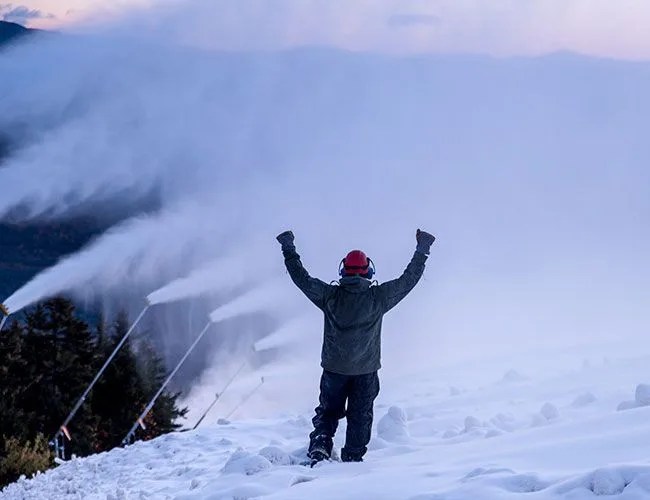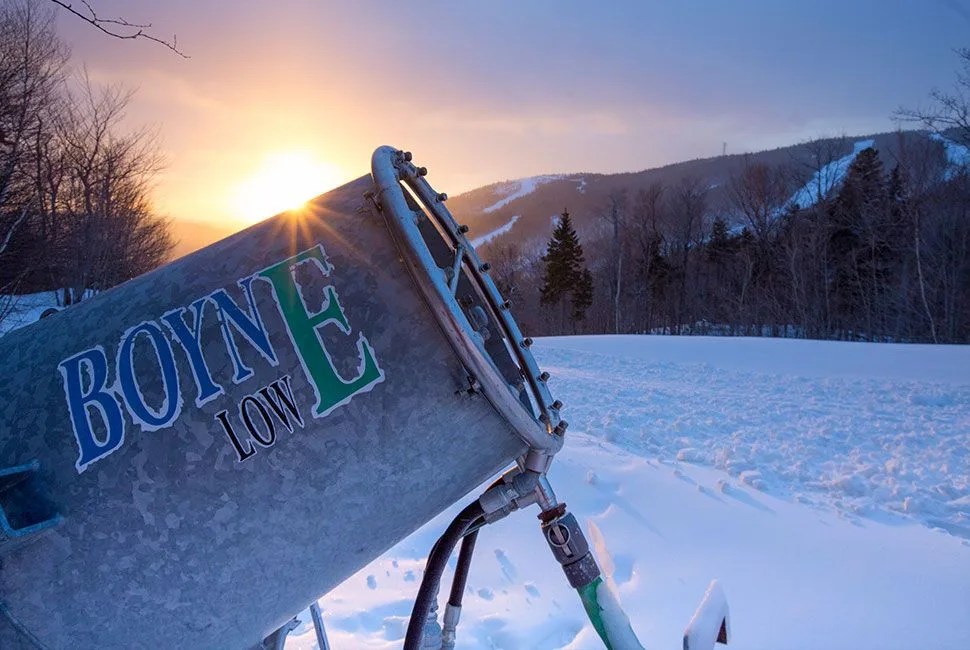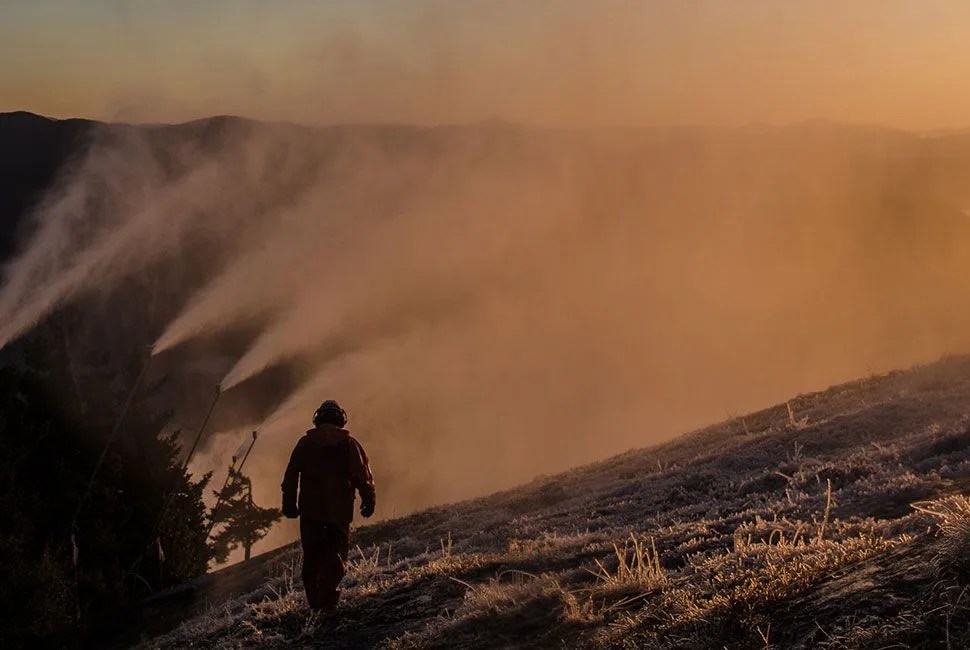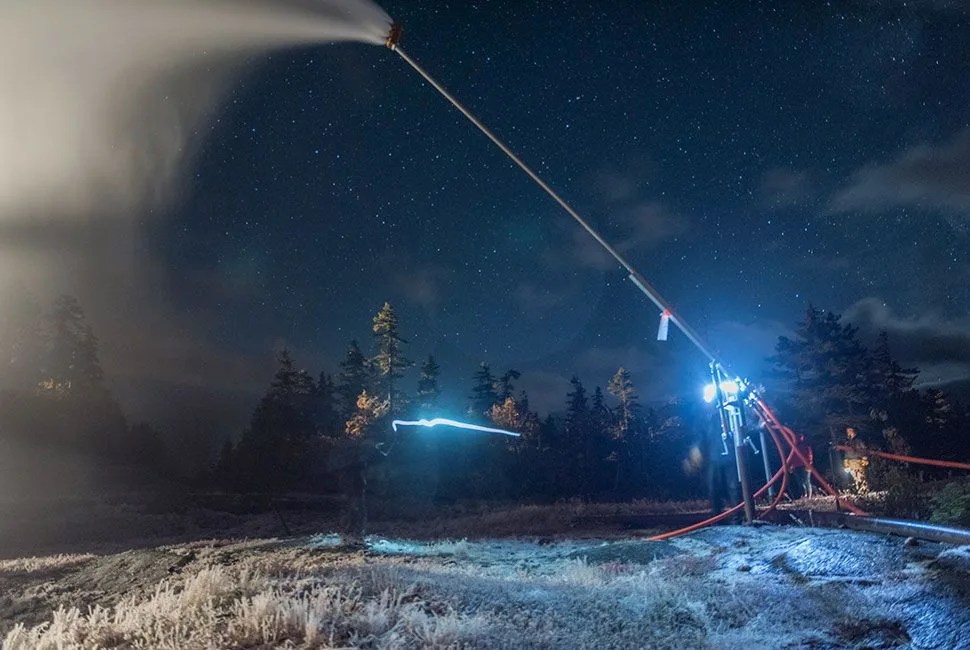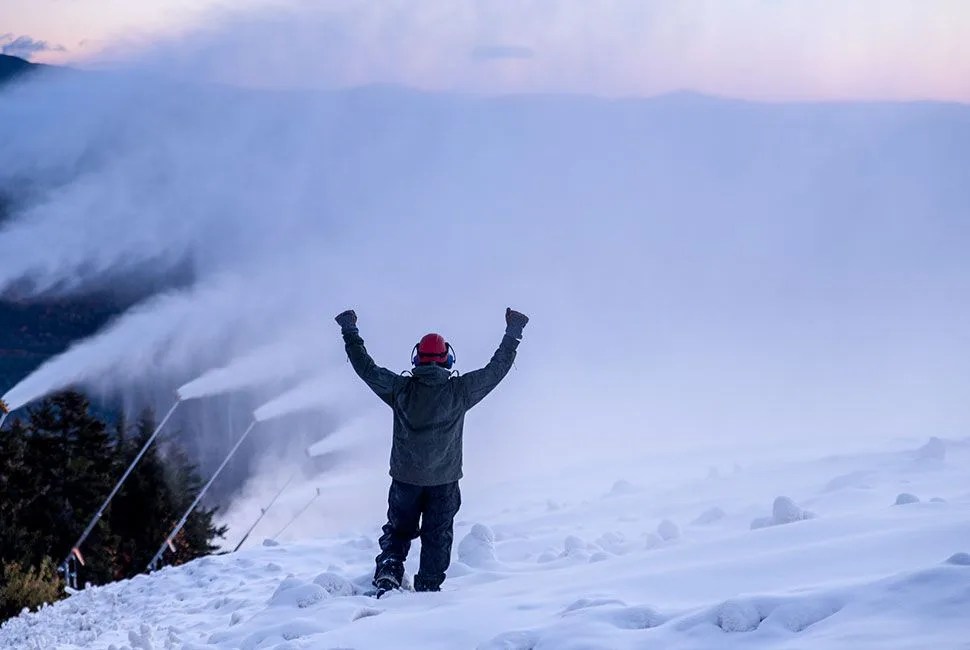4 photos
“The modern ski industry wouldn’t exist if it weren’t for snowmaking,” says Michael Berry, president of the National Ski Areas Association (NSAA), the trade association for ski-area owners and operators. “Flat out. It’s unequivocal.” America’s eastern ski resorts need to be prepared to cover their entire skiable area maybe four or five times a year. And in the west, resorts make snow at the beginning of the season to get people on the hill as early as possible. If there’s no snow on the ground, ski season can’t begin. And if ski season can’t begin, there’s less money being made. That’s why in the past few decades, snowmaking has become big business and a modern engineering miracle.
The first snowmakers were developed and patented in the early ’50s by Tey Manufacturing Corporation. The Tey crew weren’t “ski area guys,” Berry says, meaning they weren’t from the mountain towns. But down in the lower altitudes, this group was developing some of the first aluminum skis. During that design process, they fancied that if they could guarantee snow on the mountain, it’d sure help ski sales. And so, in that spirit, the elementary snowmaker was born. As the Times reported, the first machine used a garden hose, a 10 horsepower compressor and a spray-gun nozzle.
By the ’70s, snowmaking had become standard for resorts in the East and commonplace for those in the West. Systems debuted at resorts like Keystone and Vail, then moved to places like Breckenridge and Steamboat before proliferating onto most mountains. These first systems were designed to link the upper and lower mountain early on in the ski season, and also to ensure there was still snow to ski in the spring. Today, the only resorts that don’t have extensive snowmaking systems are in the Pacific Northwest, where a maritime climate makes it much more difficult to make snow (and therefore the purchase cost of a snowmaking system becomes difficult to justify).
Making the White Stuff
Turning Water and Air into Fluffy Snow
